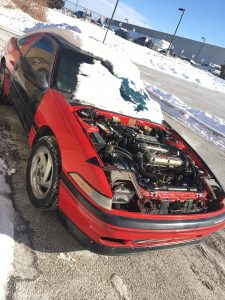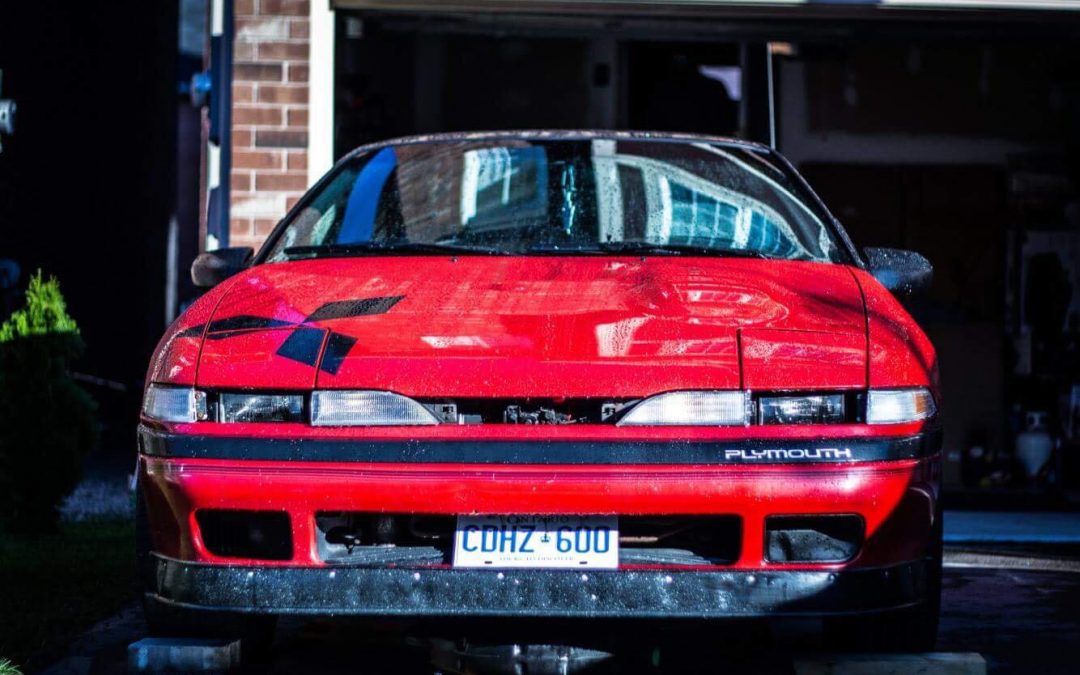 When my best friend Imaad first got his car, it was a 1990 Plymouth Laser. It was front wheel drive, and had a 4G63T, which is a 2.0L turbo, inline 4 making around 230hp stock. The engine has a cast iron block, which allows the car to run high horsepower on stock internal parts. The cars boost was turned up to 17psi, where the stock boost pressure for the car is set around 8-10psi. Having the boost increased this much does put more strain on the engine, but due to the blocks strength, it is usually able to handle it. This also increases your acceleration, overall increasing your horsepower. The car was great when he first bought it, with almost no problems besides a couple battery issues that were fixed easily. One day him and his dad were out on a drive in the car. His dad was driving, and did a 3rd gear pull. They were climbing up to around 6000rpm full throttle, when the car jerked and ultimately blew up. Were all not 100% sure on what happened, but some of the factors included the oil dipstick popping off and spraying oil in the engine bay, the car having a massive vacuum leak, and the car running horribly.
When my best friend Imaad first got his car, it was a 1990 Plymouth Laser. It was front wheel drive, and had a 4G63T, which is a 2.0L turbo, inline 4 making around 230hp stock. The engine has a cast iron block, which allows the car to run high horsepower on stock internal parts. The cars boost was turned up to 17psi, where the stock boost pressure for the car is set around 8-10psi. Having the boost increased this much does put more strain on the engine, but due to the blocks strength, it is usually able to handle it. This also increases your acceleration, overall increasing your horsepower. The car was great when he first bought it, with almost no problems besides a couple battery issues that were fixed easily. One day him and his dad were out on a drive in the car. His dad was driving, and did a 3rd gear pull. They were climbing up to around 6000rpm full throttle, when the car jerked and ultimately blew up. Were all not 100% sure on what happened, but some of the factors included the oil dipstick popping off and spraying oil in the engine bay, the car having a massive vacuum leak, and the car running horribly.  From here, we don’t really know where to go, as Imaad’s dad has sent the car to his friend who works on DSM’s, as Imaad’s dad use to own a 1992 Eagle Talon. Next update coming soon!
From here, we don’t really know where to go, as Imaad’s dad has sent the car to his friend who works on DSM’s, as Imaad’s dad use to own a 1992 Eagle Talon. Next update coming soon!

